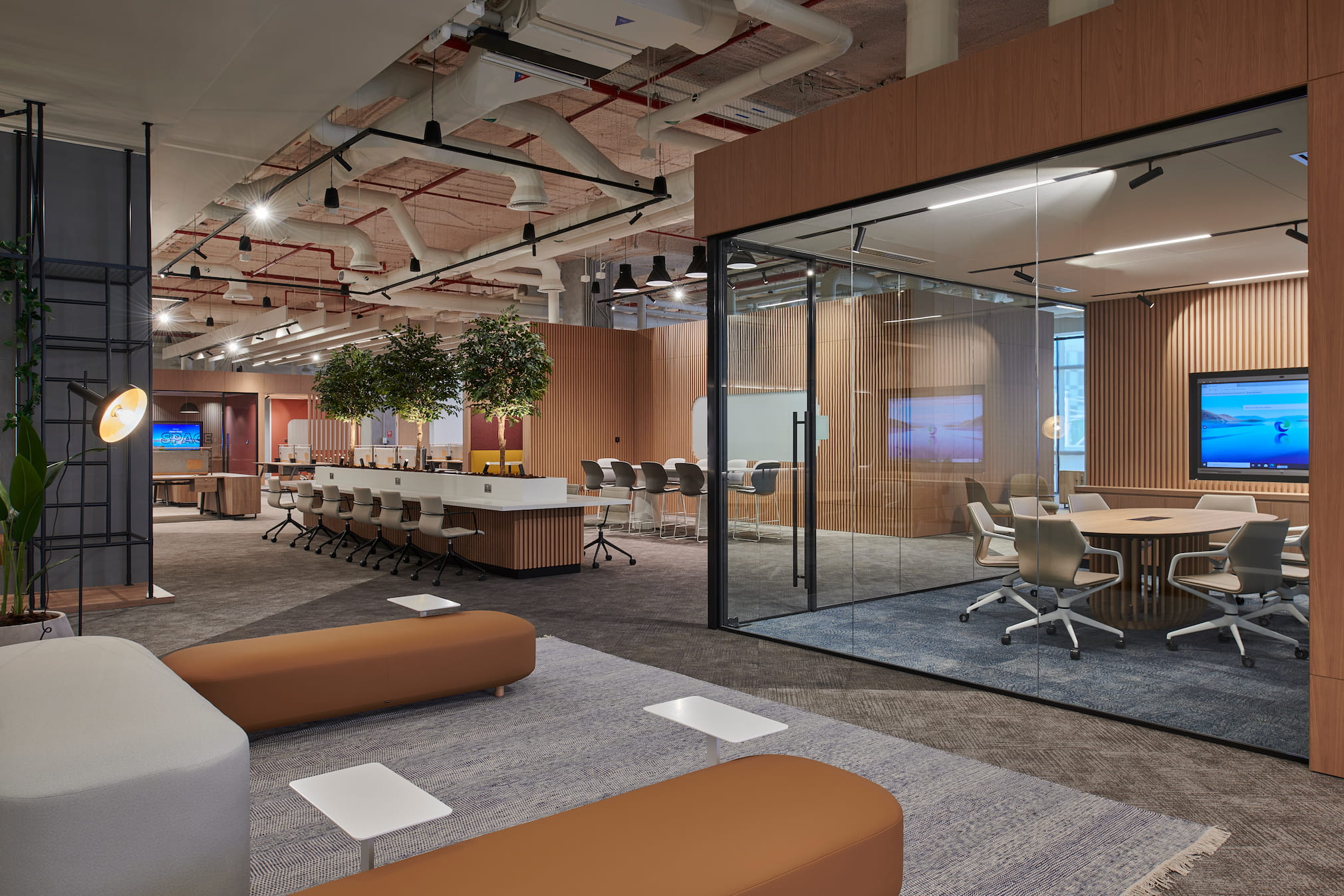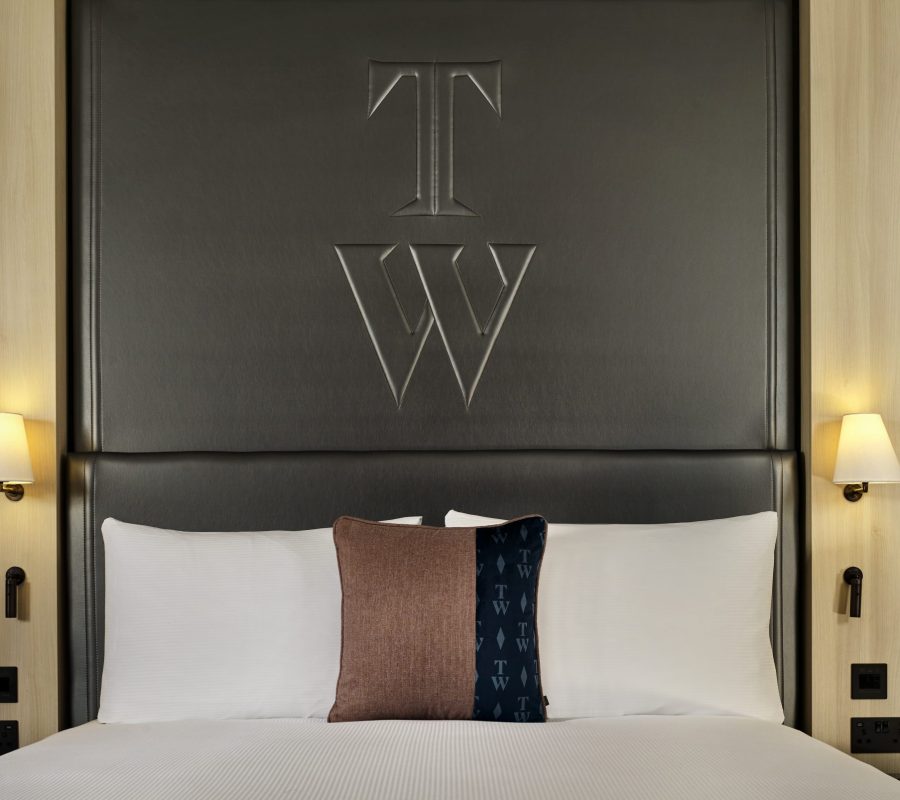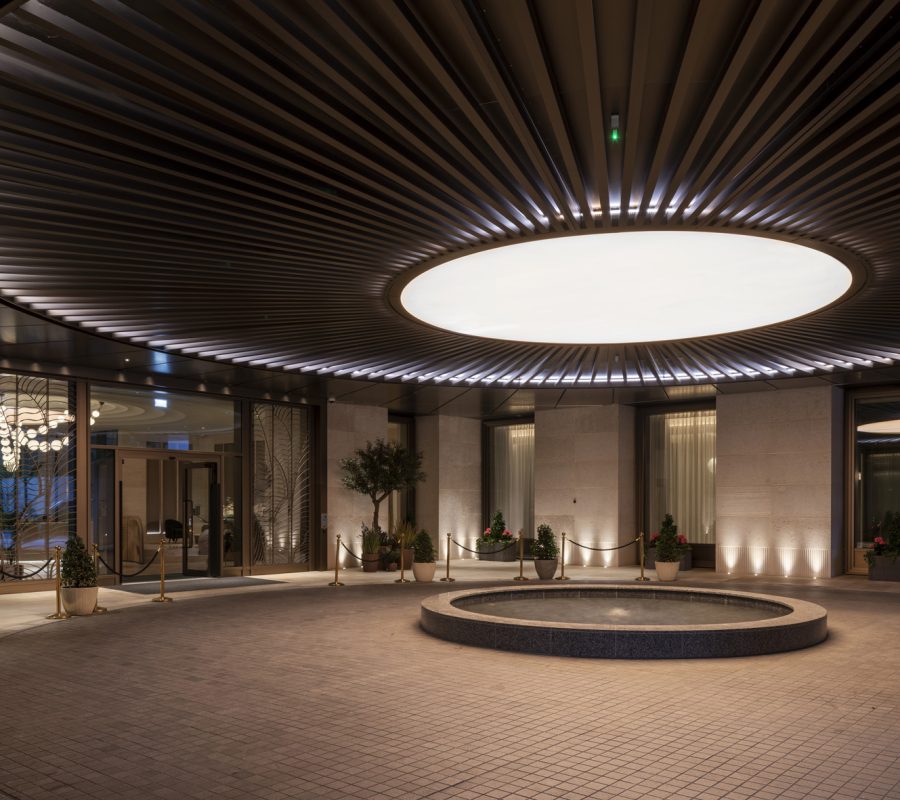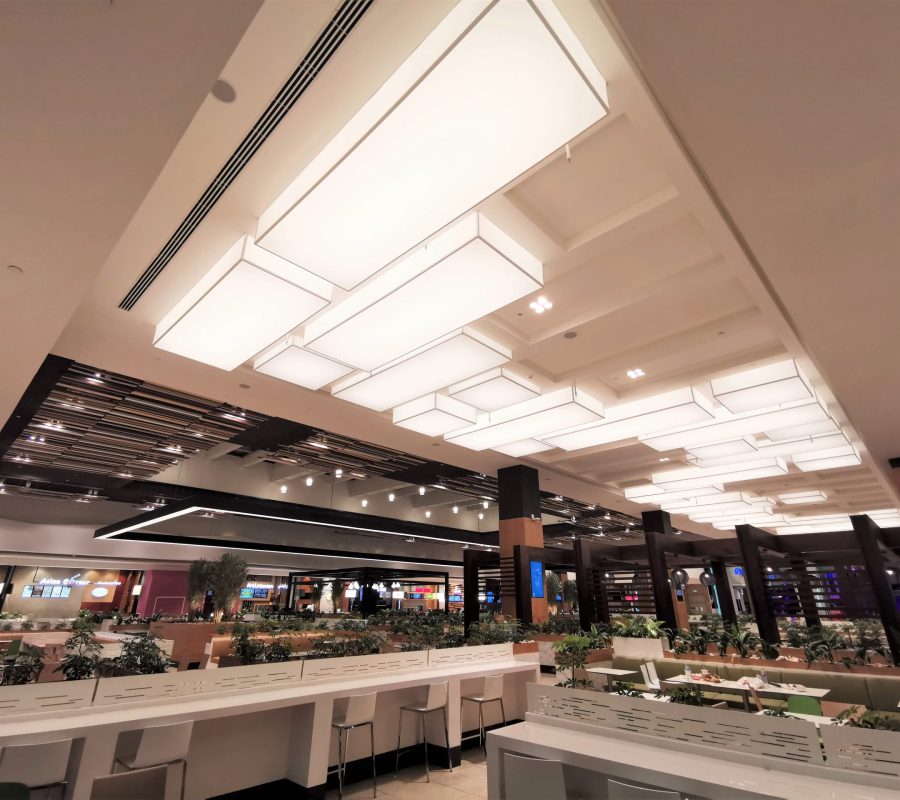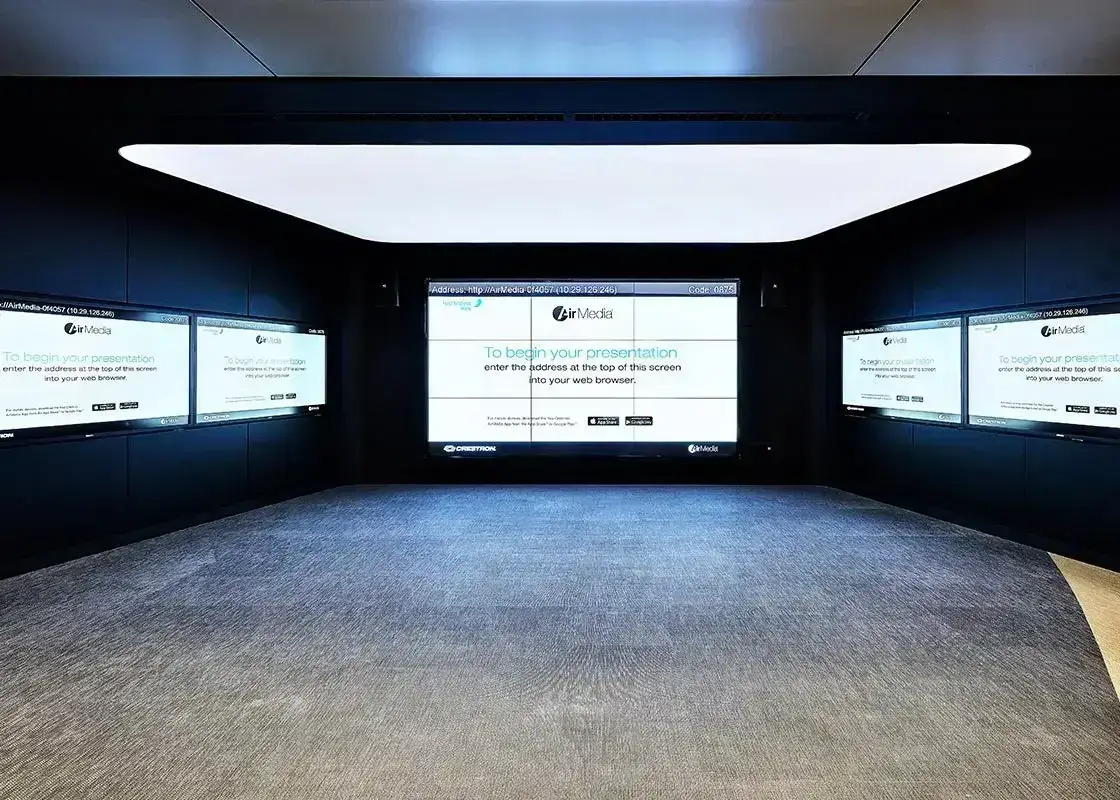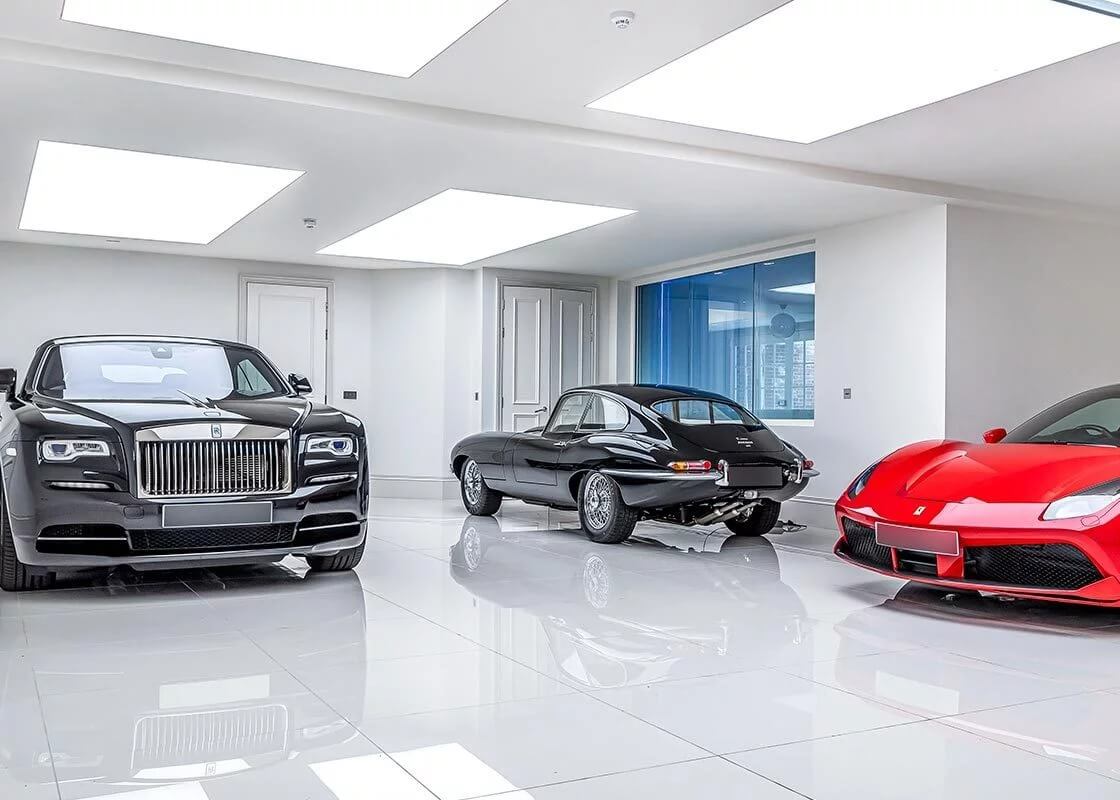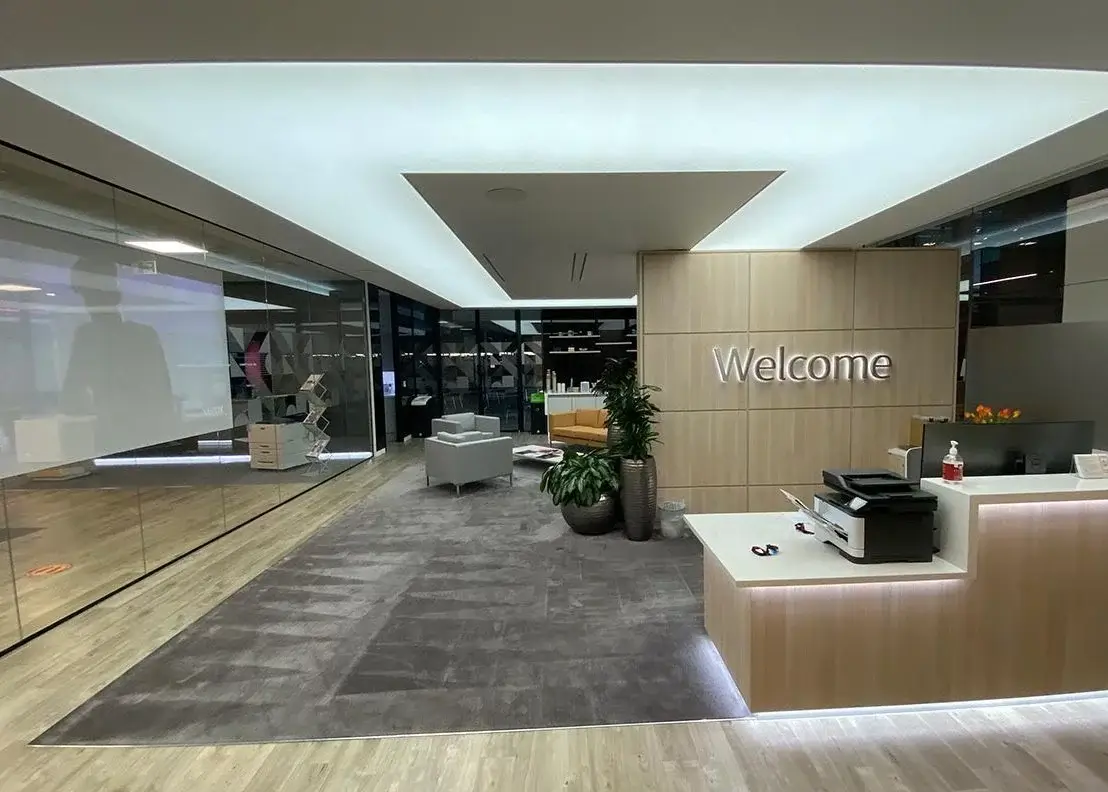TOP INTERIOR DESIGN TRENDS: LIGHTING’S ROLE
The focus of interior design is shifting towards creating functional environments which inspire innovation and maximise wellbeing. Interiors are quickly becoming more than just spaces; they are reflections of how we live, work and interact. Lighting is a central factor in the evolution of interior design trends as they transition from a simple, often basic, tool for visibility to a dynamic feature which enhances an atmosphere in your home, supports sustainability in your business and responds to your needs in real time.
Here are the interior design trends which are rapidly being shaped by lighting
1. Sustainable and Biophilic Design
As sustainability increases in popularity, biophilic design – an approach that connects interiors with nature – will continue to see significant growth in interior design. Biophilic design uses several natural materials to create calming environments to help improve your wellbeing. These materials include wood, stone and bamboo, which are used alongside plants and greenery to create these environments in outdoor spaces.
Lighting’s role: LEDs and solar-powered lighting are both energy-efficient lighting methods. Using these fixtures in lighting design will complement the natural elements of biophilic design. Smart lighting systems have risen in popularity because of their ability to successfully mimic the natural progression of daylight, helping to support our circadian rhythms and boost our overall wellbeing. Solar-powered outdoor lighting is already a common feature in biophilic design, ensuring maximum sustainability for homes and businesses, but it will continue to gain popularity and offer energy-conscious options to gardens, patios and walkways, helping to reduce our reliance on traditional energy sources in lighting design.
2. Multifunctional and Flexible Spaces
As companies continue to use hybrid work models and they continue to grow in popularity, homes are beginning to evolve into multifunctional spaces. You may be looking to develop a room so that it can serve multiple purposes, like an office that doubles as a workout space or a kitchen that can serve as a social area for family and friends. Therefore, flexibility is an important factor in interior design trends.
Lighting’s role: adjustable lighting systems will become a significant aspect of your home because it allows you to control the lighting of different spaces and shift between lighting functions effortlessly when it is appropriate. There are a range of lighting fixtures which might best fit your multifunctional space, like recessed lighting, track lights and pendants with dimming and colour-changing capabilities to allow users to adjust the atmosphere to fit with the intended use of each room. Smart lighting systems will respond to function changes and automatically adjust the brightness or hue of a light to ensure the environment is suitable for any task, from working with colleagues online, relaxing with family or socialising with friends.
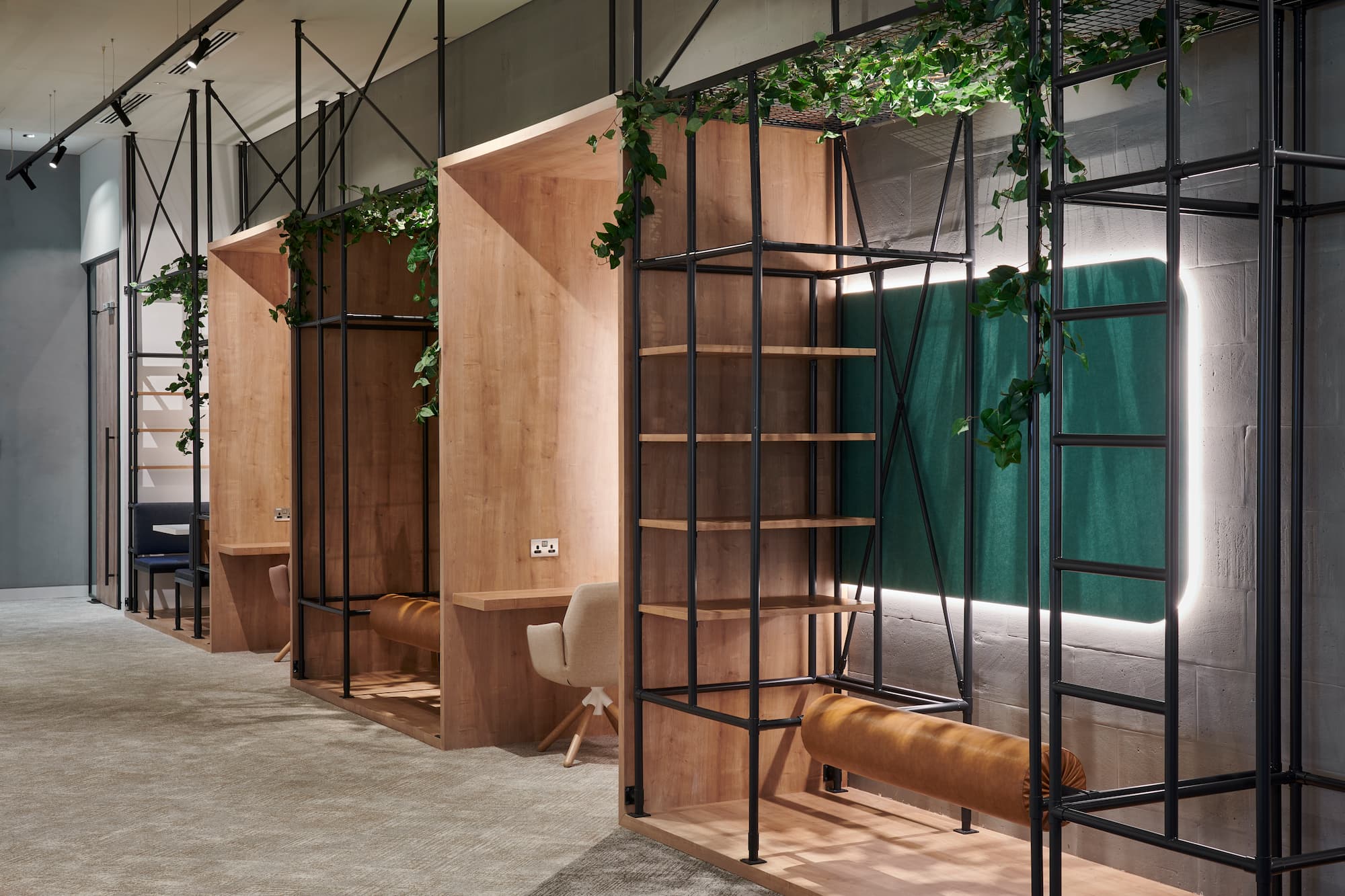
3. Minimalist and Clean Lines
Minimalism continues to be a huge aspect of interior design trends, as nowadays, interior spaces are heavily focused on clean lines, open layouts and clutter-free zones. Minimalist designs help to encourage a sense of peace and clarity in your home while creating calming and simple environments for everyone.
Lighting’s role: as a trend, minimalism will encourage a shift towards sleek and streamlined lighting designs which fit perfectly into the overall design of your home or business space. It is important not to disrupt the clean lines of a room by using lighting fixtures like recessed lightboxes, pendant linear LED lighting and hidden LED strips. Bespoke lighting designs will seamlessly integrate into the aesthetic of each room to provide subtle and indirect illumination to enhance the uniqueness of these spaces in your home or business.
4. Smart and Adaptive Lighting
Ever-changing technology and the increased focus on smart homes means that lighting will increasingly be integrated into the broader smart living ecosystem. As lighting designs expand with changes in technology, it will be able to adapt to your daily routine and automatically adjust to your specific needs and moods.
Lighting’s role: smart lighting will only continue to evolve and grow, especially as AI-driven systems become more common in mainstream use. These systems can automatically adjust colour temperature, brightness and the type of light depending on the time of day, activity or individual preference. For example, cooler toned lights may be used during the day to boost your productivity when working, while warmer tones are beneficial at night for creating a comfortable environment for your family. These systems can be controlled through voice commands, smartphones or gesture-based controls, which makes them incredibly user-friendly.
5. Bold Colours and Artistic Fixtures
In contrast to using minimalism, bolder colours and experimental designs are becoming more popular in interior design, with vibrant hues and mixed textures used throughout different rooms in homes and businesses.
Lighting’s role: lighting will be a key factor in this trend and will be used as an artistic statement. Colour-changing LED lights will create full-spectrum illumination which can be adjusted to align with the mood of a particular room, a specific time of day or an overall design theme. Sculptural lighting fixtures will become focal points in different rooms, with pendants, chandeliers and floor lamps becoming bold pieces of art from their traditional stance as functional objects. These creative designs will begin to push boundaries, with light installations sporting unique shapes, multi-coloured lighting systems which change during the day and large-scale lighting elements that command your attention, no matter where they are located in your home or business.
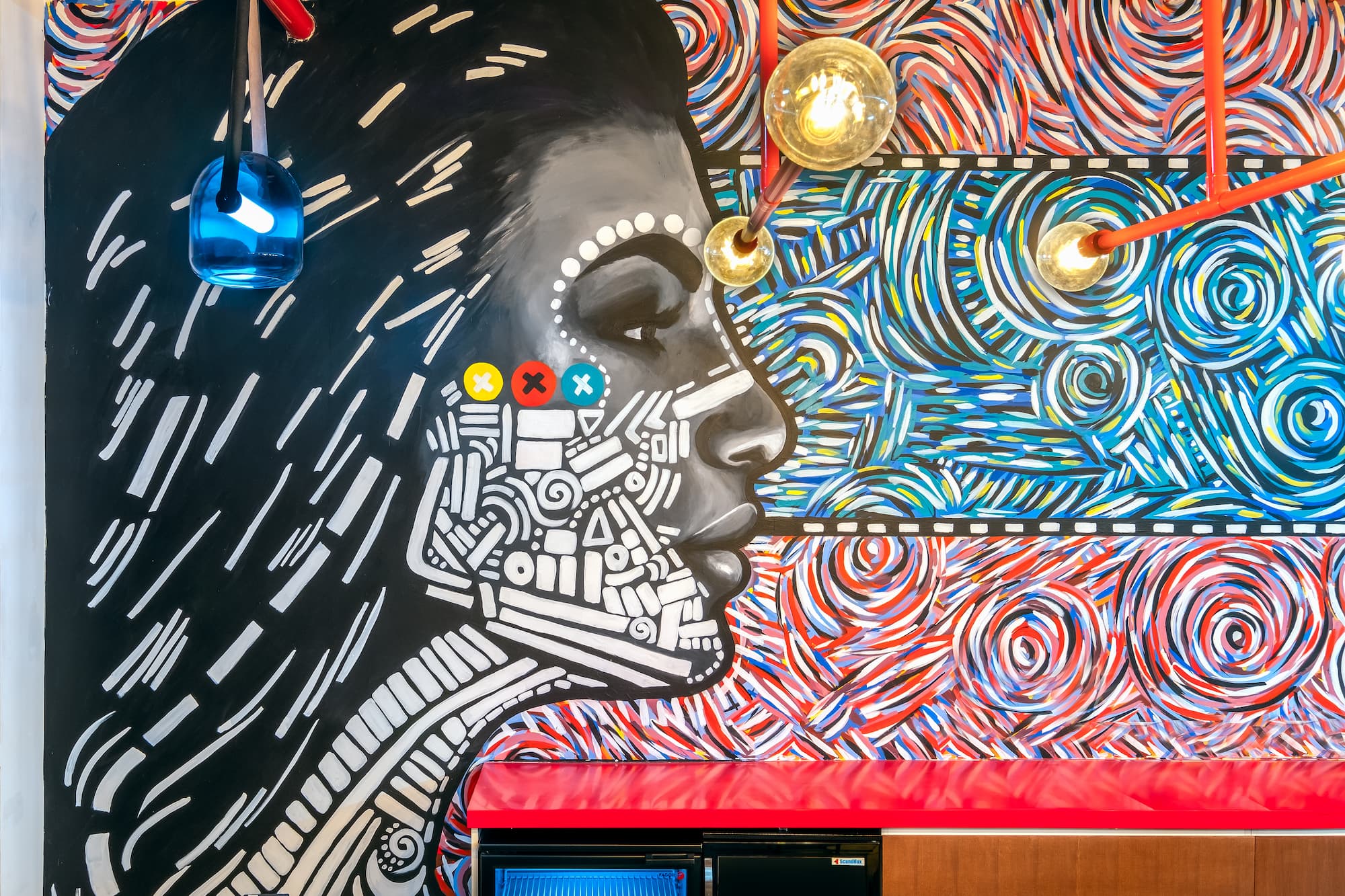
6. Maximalist Interiors
Whilst minimalism remains a common trend, the concept of maximalism interior design, particularly shown through lighting design, is growing in popularity. With bold, layered interiors filled with rich textures, intricate patterns and vibrant colours, the contrast to minimalist lighting will create opportunity for more expressive and personality-driven designs in commercial and residential spaces.
Lighting’s role: layered lighting will be key for interior designs in maximalist spaces. Using ambient lighting (overhead or recessed lights), task lighting (table lamps or desk lamps) and accent lighting (spotlights or wall sconces) will help to create a rich, multi-dimensional atmosphere in areas which may use lighting designs, including commercial lighting or office lighting. Light fixtures will be placed strategically to highlight the varying architectural features, artworks or textured surfaces and gold and brass fixtures will be prominently displayed across certain room to create a luxurious and sophisticated look to contrast with the minimalistic trend.
